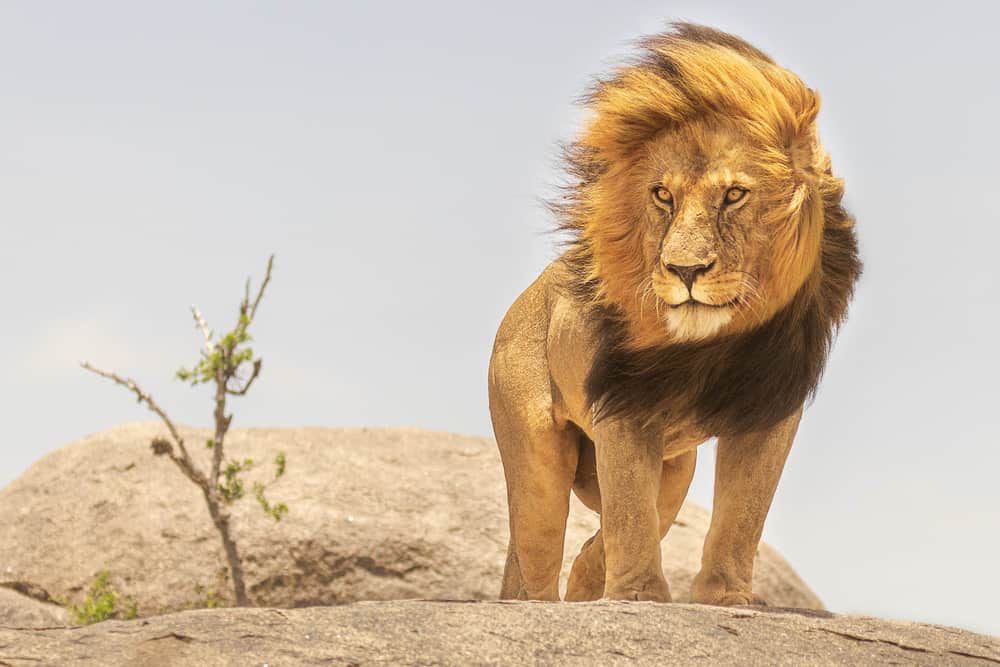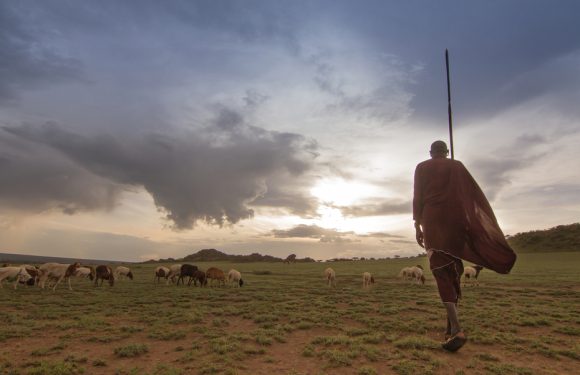
Lions are the world’s second-largest big cats after tigers. Muscular bodies, powerful limbs, and their ability to work together make them the kings of the savannah. But unlike leopards and jaguars, which are adept climbers, lions are primarily ground-dwelling animals. Their build is optimized for strength and power on the plains rather than agility in the trees. Given a lion’s considerable weight—adult males can weigh up to 550 pounds (250 kilograms)—climbing a tree would be challenging.
However, lions can and do climb trees under certain circumstances.
Why Do Lions Climb Trees?

Several factors contribute to why lions might take to the trees.
One reason is to avoid the heat of the ground during the hotter parts of the day. The sun can become intense, and the prevalence of biting insects increases. Climbing into the branches offers a respite from these discomforts.
Additionally, elevated positions provide strategic advantages. From the trees, lions can keep an eye on prey movements, spot rival predators, and monitor their pride members. Younger lions, especially cubs and sub-adults, may climb trees out of curiosity or playfulness.
Climbing trees is not without risks for lions. Their heavy bodies make descending tricky, and there is a danger of injury from falls.
Where Can Tree Climbing Lions Be Seen?

In Tanzania, this behavior is notably observed in specific regions. Lake Manyara National Park is famous for its tree-climbing lions. Visitors can see these animals lounging on the branches of acacia and sycamore fig trees. Also in the Serengeti, lions have been observed climbing trees.
Outside of Tanzania, similar behavior has been reported in Queen Elizabeth National Park, Uganda as well as Kruger National Park, South Africa.
Why Don’t Lions in Other Places Climb Trees?
Lions in other places don’t climb trees primarily due to the absence of environmental pressures that make climbing advantageous.
In many parts of Africa, the necessity for lions to climb is minimal because the ground conditions are favorable for resting and hunting. The open savannahs and grasslands provide ample visibility for spotting prey and detecting threats without the need for higher vantage points. Additionally, the types of trees found in these areas often lack the sturdy, low-hanging branches that can support the weight of a lion, making climbing both dangerous and unnecessary.

Without environmental pressures like intense heat or rampant insect activity, which is theorized to encourage tree climbing in places like Tanzania, lions in other regions have little incentive to develop this skill. Moreover, climbing is often a learned behavior passed down through generations. If it isn’t part of a pride’s customary practices, it’s unlikely to be adopted by future members.
Which Other Big Cats Climb Trees
While lions can climb trees, they are not as proficient as other big cats.



Leopards, for instance, are exceptionally strong climbers. They often drag their prey into trees to keep it safe from scavengers like hyenas. Leopards have a lighter build, more flexible bodies, and sharper, more curved claws suited for climbing.
Cheetahs, on the other hand, are built for speed and are not known for their climbing abilities. They may climb onto low branches, termite mounds or even safari vehicles to gain a better view of their surroundings but rarely venture higher.
Jaguars, the third-largest big cats, are great climbers. Native to the Americas, they inhabit a range of environments from rainforests to swamps. They often rest on branches and hunt arboreal or semi-arboreal prey like monkeys and birds. Jaguars also use trees to ambush prey on the ground.



Tigers, when young, are quite capable of climbing trees. But as tigers mature, their increasing size and weight—adult males can weigh up to 660 pounds (300 kilograms)—make climbing more difficult. Adult tigers generally avoid climbing unless necessary, such as when pursuing prey or evading danger.
Mountain lions, also known as cougars or pumas, are highly agile climbers that can navigate trees with ease. Unlike African lions, which are heavier and less inclined to climb, mountain lions are solitary creatures whose survival depends on their ability to traverse diverse terrains, including forests and mountainous regions across the Americas.
Snow leopards are capable of climbing trees but they rarely do so because they inhabit high-altitude mountainous regions where trees are scarce. Their adaptations are primarily suited for moving on steep rocky terrain rather than climbing trees.




























































